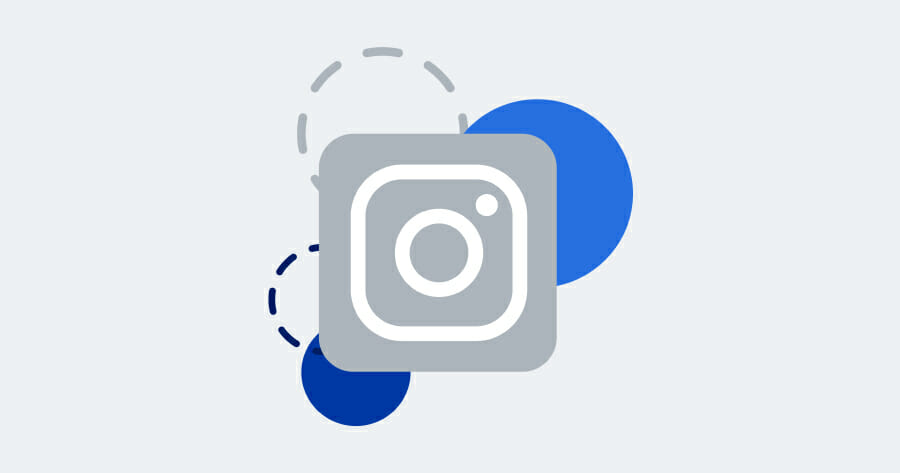The Instagram algorithm seems to be everchanging and it’s a source of frustration for most digital marketers. During its Creator Week event, which is dedicated to providing insights and tips to creators on the app, Instagram stated that it wanted to do better on educating its users on how the algorithm dictates the reach of content on its platform. They recognized that there have been a lot of misconceptions previously and want to provide more clarity in how the app works. In this post, we’ll break down the key takeaways from this event to help digital marketers understand how content is distributed and help you better plan content in the Social Assurance app.
Why is the Instagram Algorithm Important?
You’ve probably heard of algorithms before and how many people “hate” them. To be honest, algorithms aren’t all bad. The algorithms’ jobs are to show you content that you care about. What’s bad about that? Well, these algorithms get a lot of slack because it makes our jobs as digital marketers a little more complicated. The algorithm means that we have to put a lot more effort into building virtual relationships with our target audience through relevant, meaningful, and captivating content.
Since Instagram’s launch in 2010, the “Feed” had been a series of photos consumed chronologically. When 2016 rolled around, Instagram’s users were missing about 70% of their followings’ posts. This included half of posts from their closest connections (friends and families). So, this information prompted Instagram to change the way content is showed to you, based more on perceived relationships.
Instagram uses a variety of algorithms, classifiers, and process to determine the best content to show to you. Their ultimate goal is to get you to stay on the app longer and to increase engagement (like, save, comment, share) with relevant content.
Pro Tip
The more your content is engaged with, the higher frequency and online visibility your content will have. It can no longer be about pushing a bunch of content out. It comes down to how your audience is engaging with that content.
Feed and Stories are where you’ll see content from friends and families.
Instagram said that over the years, they have learned that its users expect and want to see content from their connections, primarily, friends and families on their Feed and in their Stories. Instagram uses “signals” to determine a piece of content’s importance to you. These include:
- Information about the post: how much engagement the post is getting, when was it posted, what the location is, how long of a video it is, etc.
- Information about the user who posted the content: Instagram uses information like how often you have interacted with this person in the past few weeks: through messages, viewing or engaging with their Instagram page.
- User activity: How much you like posts and get onto the app.
- History on your interactions with another user: This includes how often you comment on each other’s posts or other ways you interact with each other on the app.
Explore and Reels Pages are ranked differently.
You’ll see content on these pages from users who you don’t actually follow on Instagram. These pages are to entertain users rather than help them stay up to date with their connections. Instagram focuses on signals of content that you have previously interacted with to show you new content that you might be interested in. These signals could be hashtags, location tags, users that users who have interacted with similar content to you have interacted with.
Pro Tip
This is why using consistent and well researched hashtags can be powerful to increase your online audience reach!
For example: If you have interacted (liked, commented, shared, saved) with a bunch of content from a local deli in the past few weeks. Instagram looks at other users who interacted with the same content from that deli and determines that you might have similar interests as those users. Instagram then looks at who those users follow (maybe a local taco shop) and then shows you content from that same local taco shop. If you interact with or follow that taco shop on Instagram, then the algorithm was successful.
Most users look at less than 50% of what is in their Feed.
You may have noticed a decrease in engagement on your posts from your previous published content. This is attributed to what type of content your followers are interacting with. It’s even more essential to be posting content that your followers are engaging with. Pay attention to what type of content is performing well and create more content similar to that. In addition to this, users are consuming less than 50% of content in their feed, this is why it’s important to also diversify your content (Stories, Reels, IGTV, etc.).
Pro Tip
Create content to be consumed in multiple ways, through stories, Reels, and IGTV. This allows your audience to interact with your content, they way they choose and increase your content engagement.
The best way to use Instagram’s algorithms to your advantage is to pay attention to the content that your followers are engaging with through analytics and post more similar content. Diversify your content to reach more people that aren’t following you. And remember, social media is to build a relationship with your followers, not to always sell them on a product or service.
Make creating content even easier by automating your content! Schedule a demo here to see how Social Assurance can help elevate your content strategy.


